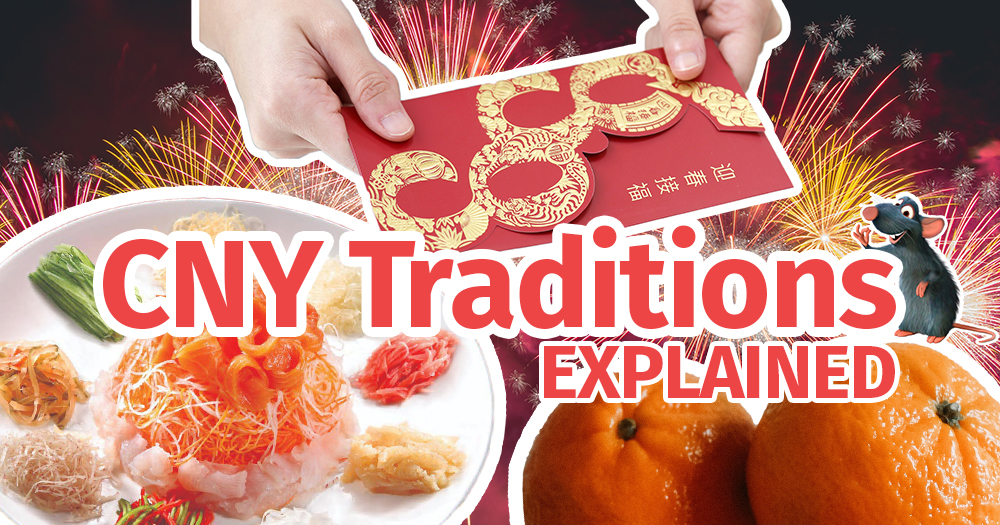This weekend, many of us will be joining family and friends as we usher in the new year, Chinese style.
It will largely be much of the same stuff that we did last year — steamboats, oranges, yusheng — with maybe some rat-themed stuff sprinkled around.
But why exactly do we do the things we do this time of the year? And what exactly do they mean anyways?
Whether you're genuinely curious or just need some conversation fodder to bat away those pesky and awkward questions, we try and explain some of the goings-on of the festive period.
1. Origins of Chinese New Year
So why do we celebrate Chinese New Year, when we do?
It doesn’t take a genius to point out that Chinese New Year is celebrated on the first day of the traditional Chinese lunar calendar but this wasn’t always the case.
According to Chinese Customs and Festivals in Singapore, a book published by the Singapore Federation of Chinese Clan Associations (SFCCA), Chinese historical records point to the practice of annual celebrations starting in the western Zhou period (1121 - 771 BC).
The practice originated as a celebration of the harvest and was not strictly tied to the start of the new year. In fact, it was originally celebrated on the eleventh month of the lunar calendar.
The actual date of the celebration was changed multiple times by many emperors subsequently as a method of stamping their heaven-mandated leadership over the empire.
It wasn’t until Emperor Han Wu Di took the throne in 140 BC that Chinese New Year began to be celebrated on the day that it is today.
Seeking to do away with the confusion over the changing of dates, the emperor institutionalised his own almanac that saw celebrations move to the first day of the first month of the lunar calendar, and so began Chinese New Year.
Today’s lunar calendar is still principally based on Han Wu Di’s almanac, according to the SFCCA.
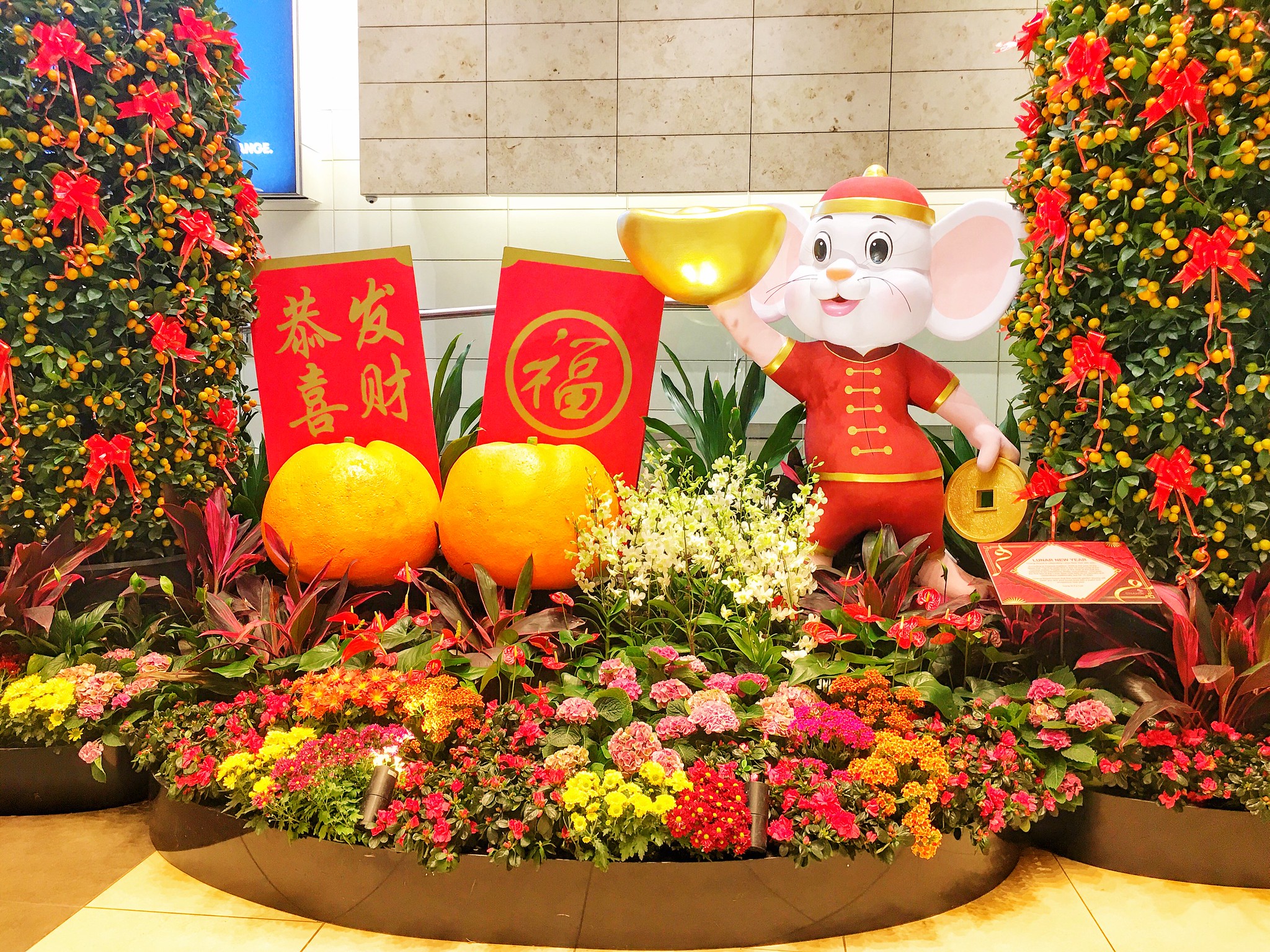 Image by Cattan2011 via Flickr
Image by Cattan2011 via Flickr
2. The savage beast afraid of red
There are many different legends and tales tied to why we celebrate Chinese New Year in the first place, but none seem as popular or widespread as the legend of Nian.
In time immemorial, Nian (also the Chinese word for "year") was said to be a beast that would terrorise villages, killing its inhabitants.
Some accounts, like the one retold by Wei Liming in her book Chinese Festivals: Traditions, Customs, and Rituals, say that villagers eventually figured out that Nian would appear every 365 days and ravage human communities.
As such, the villagers would board themselves up in their houses and stay up all night, vigilant of any danger should it come upon them.
A New Beginning: Customs of the Lunar New Year, published by Marshall Cavendish, presents an extension of the legend.
In this version, Nian appears one year and completely decimates a village, killing everyone except for a newly married couple and some children.
This one incident leads people to discover that Nian had not attacked the couple as they were wearing red, and had spared the children because they were playing with firecrackers.
It turns out that the savage beast was afraid of both the colour red and loud noises.
As a result, villages would be decked out in red while a racket would be created by music every New Year to protect against Nian.
Eventually, the god Zi Wei — the Great Emperor of Middle Heaven — took pity on humans and imprisoned Nian, though evidently the practice of wearing red, smashing cymbals (and, ahem, blasting loud CNY music in shopping malls and open arenas) has persisted until today.
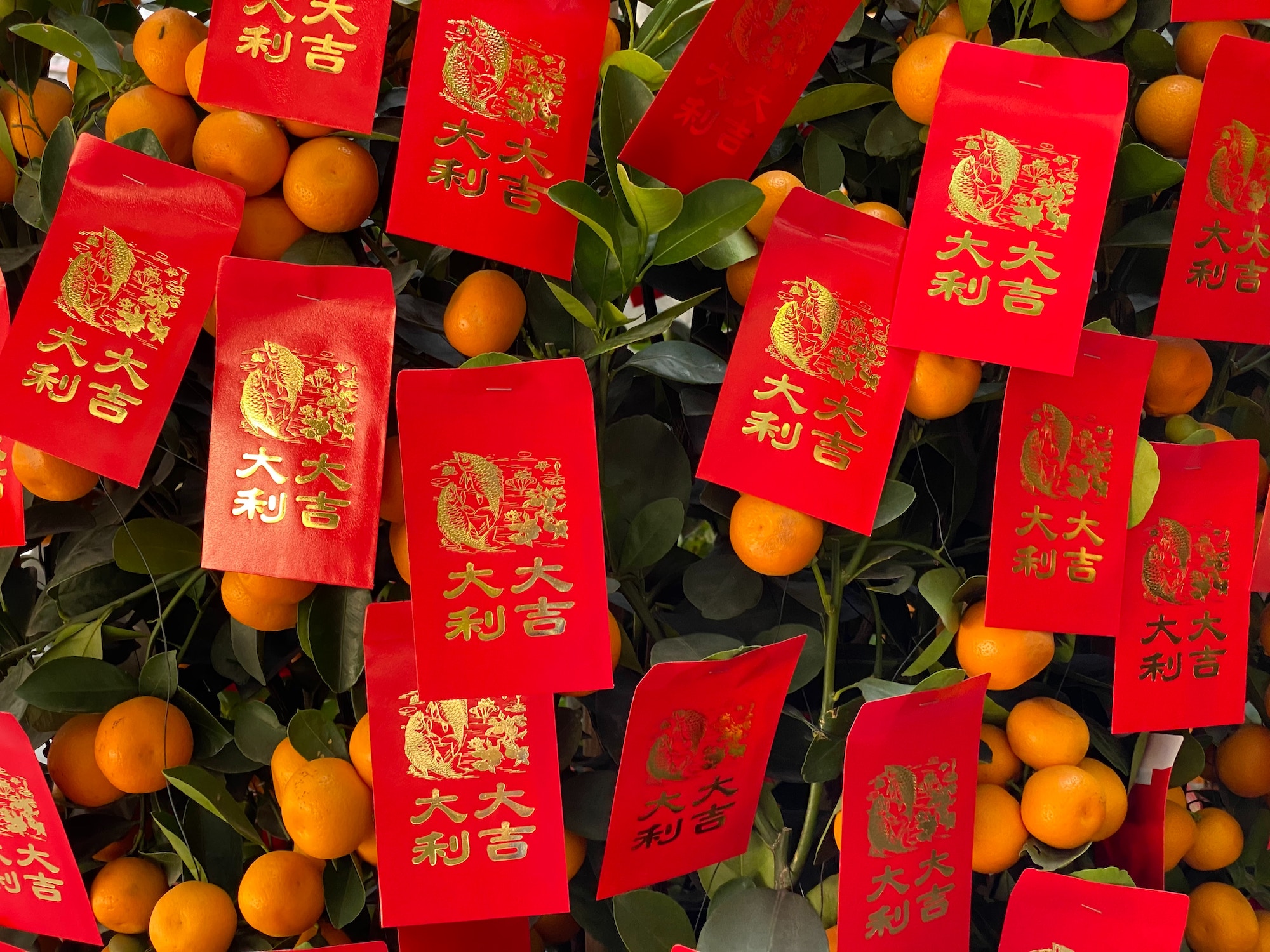 Photo by Yuwei Shaw via Unsplash
Photo by Yuwei Shaw via Unsplash
3. The giving of oranges
So what about some of the things that actually happen during Chinese New Year? Where did these come from and what do they mean?
No Chinese New Year celebration is complete without ending the day bringing your hands to your nose to smell the distant fragrance of citrus and new banknotes.
If you, like me, quite enjoy that smell, then you have the Chinese belief of "li shang wang lai" (礼尚往来) to thank.
According to the SFCCA, this is the practice of seeking “reciprocity in all human relationships” — hence the exchanging of gifts.
But swapping oranges is not actually widely practised throughout China, though it is a Chinese New Year staple here in Singapore.
In fact, it is only seen throughout Southern China and practised by Cantonese-speaking people.
In Singapore, where festive traditions are largely influenced by Cantonese practices, oranges are exchanged because the Cantonese word for the fruit is “gam”.
This word sounds similar to the Cantonese word for gold, making the exchange of oranges symbolic for wishing one prosperity.
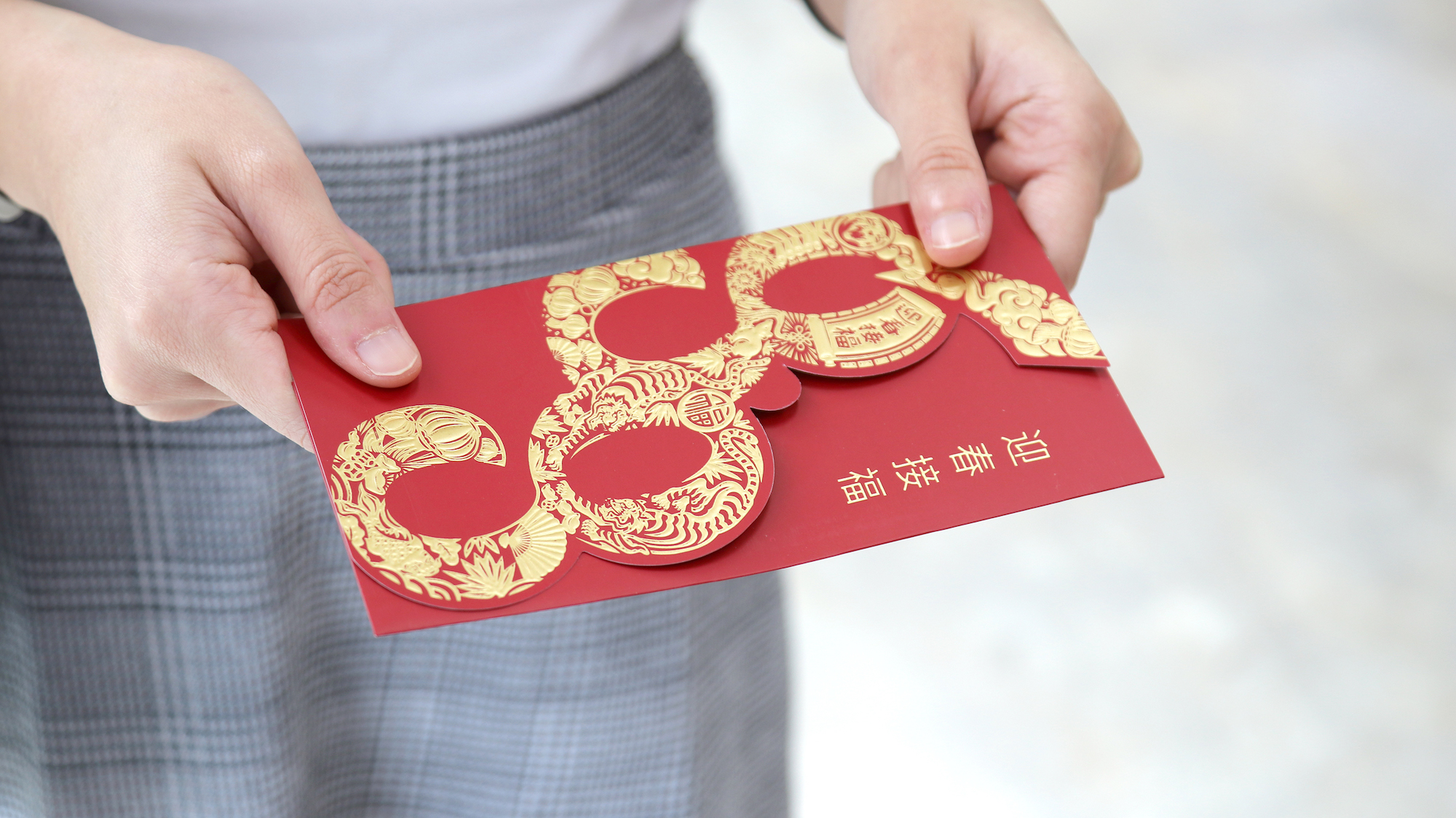 Image by Joshua Lee
Image by Joshua Lee
4. What about red packets?
Well, there’s another demon from Chinese legend to thank for that — Sui.
Marshall Cavendish’s guide to the festive season tells a tale that also involves staying up on Chinese New Year’s Eve in fears of a fiend.
Sui, it is said, only targeted children.
One New Year, it decided that its next victim would be a boy who was loved and cherished very much by his elderly parents.
Luckily, the Eight Taoist Immortals — another bunch of legendary figures from Chinese mythology — caught wind of Sui’s plot.
They disguised themselves as coins and instructed the boy’s parents to wrap the ‘coins’ in red paper and place them under the boy’s pillow.
That night, Sui entered the boy’s room, intending to cause some damage.
However, when the demon reached for the boy’s head, golden light suddenly burst forth from under the boy’s pillow, scaring Sui away.
Giving money in red packets had since then, it seems, become common practice for parents hoping to protect their children from Sui, who must have been so shook from that first ordeal that the very sight of red envelopes caused it to experience the symptoms of what we might describe today as post-traumatic stress disorder.
The Chinese term for red packet money — “ya sui qian” (压岁钱) — actually means "money to suppress the Sui".
These days, apart from protecting you from demons, the red packets you receive (or give) also symbolise the transmission of good wishes and good fortune.
Together with other auspicious gifts (like oranges), they are presented in even numbers because of the Chinese belief that multiples of two signify happy events.
5. Yusheng
Another festive tradition with Cantonese roots is Yusheng, though the way it is commonly practised is very much a Singaporean creation.
The original Cantonese dish consisted of a simple traditional Cantonese raw fish and vegetable salad, eaten with salt, sugar, and vinegar. It was known as Jiangmen Yu Sheng.
The Teochew version — known as Husay — was made of dried fish wrapped in lettuce and coated in sesame seeds. It was eaten with a special sauce.
However, today’s version can be traced back to four chefs working in Singapore in the 60s, according to Roots.sg.
Nicknamed the “Four Heavenly Chefs”, Lao Yuke Pui, Tham Yui Kai, Hooi Kok Wai, and Sin Leung had built a serious reputation for themselves as they were all disciples of Hong Kong Master Chef Luo Chen, the Head Chef at Cathay Restaurant in the 1950s.
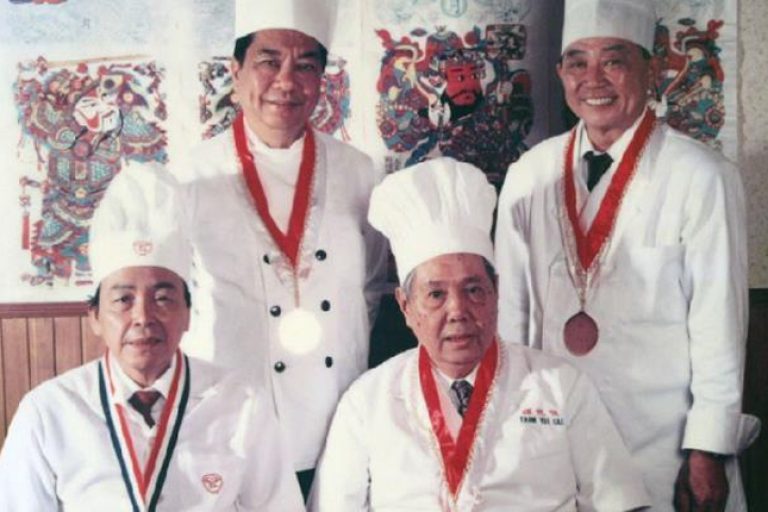 Image via Roots.sg
Image via Roots.sg
In 1964, these chefs supposedly reinvented yusheng by improving the fragrance, colour, and flavour of the dish.
Shredded radish, carrots, peanuts and flour crisps were introduced to the dish and named qicai yusheng (七彩鱼生) or “seven-colour fish salad” in Chinese.
Two out of the four Heavenly Chefs were cooking at the then-newly-opened Lai Wah Restaurant, and so that restaurant was the first place to serve this modern version of yusheng.
Apart from yusheng, the restaurant was also among the first in Singapore to serve the yam ring, another uniquely Singaporean dish.
Lai Wah Restaurant still exists today, but it is no longer located at Jalan Besar.
It moved to Bendemeer in 1970.
You can read more about the origins of Yusheng and the shouting of auspicious phrases in the salad tossing here:
6. Lion dances
So far this article has talked a lot about folklore, food, and money, but what about art and performance?
We’ve all been in a restaurant around the Chinese New Year period only to have a nice peaceful meal interrupted by the ruckus of two men jumping around and mimicking the movements of a hyperactive animal.
The lion dance wasn’t always just a show of festive frivolity, though.
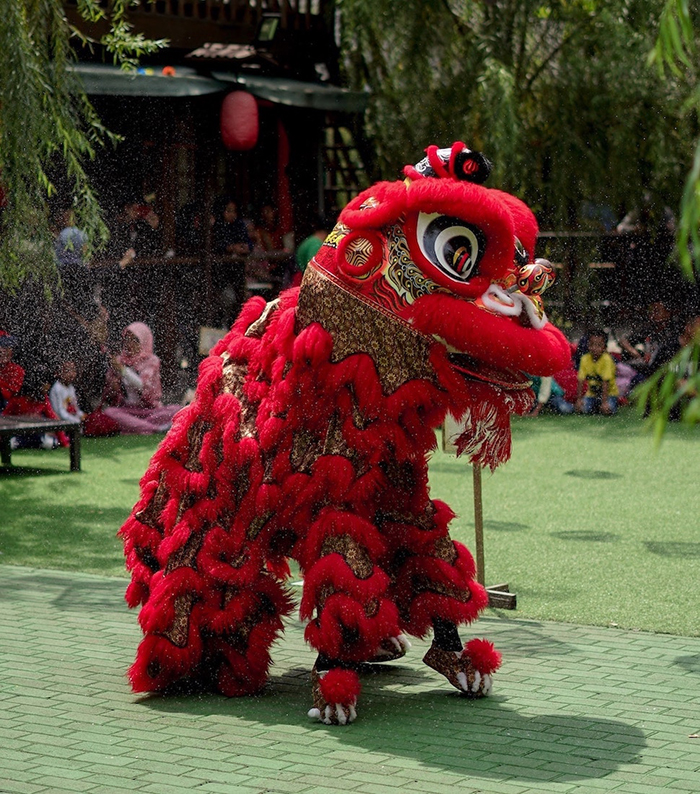 Photo by Fikri Rasyid on Unsplash
Photo by Fikri Rasyid on Unsplash
According to academic Heleanor Feltham, 19th-century southern-Chinese lion dances were filled with revolutionary imagery by the rebellious martial artists who often performed the choreographed routines.
The green vegetables — “qing cai” (青菜) in Chinese — that lion dancers must hunt down, rip apart, and throw across the room, actually represented China's Qing Dynasty, which ruled from 1644 to 1911.
In her essay, "Everybody Was Kung-Fu Fighting: The Lion Dance and Chinese National Identity in the 19th and 20th Centuries", Feltham writes that South China was often the origin of rebellions against the much-hated Qing Manchus.
Nowadays, the objects used in lion dances are symbolic of more wholesome endeavours.
Oranges and pomelos are used because of their association with prosperity and wealth.
The once insurgent use of vegetables has also been given a makeover.
Conveniently, the Chinese word for vegetables, "cai" (菜) sounds similar to the Chinese word for fortune (财). Thus spreading vegetables into the crowd represents spreading wealth and prosperity.
A consolation for anyone who happens to get hit in the face by a leaf of lettuce during the procession.
Top image composite from Unsplash, Joshua Lee, Favepng, and The Meathouse's Facebook page
If you like what you read, follow us on Facebook, Instagram, Twitter and Telegram to get the latest updates.
